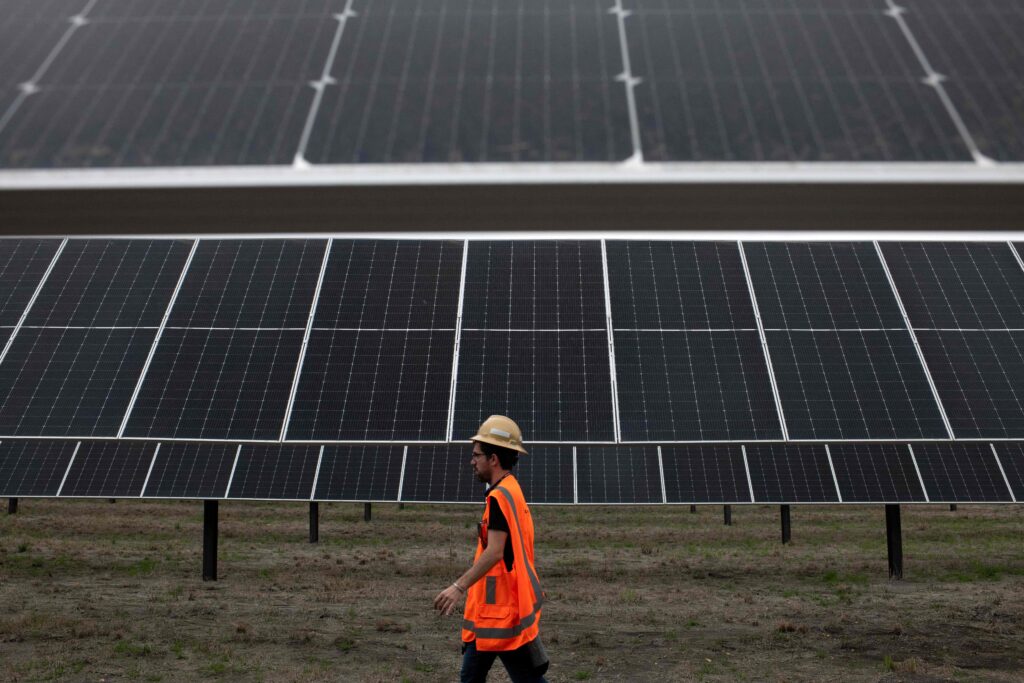Climate change may have an impact on the future stability of grid-connected solar power systems, which must be considered in Australia’s renewable energy transition planning.
According to UNSW Sydney experts, the amplitude, frequency, and length of disruptive solar generating events known as ramps will shift considerably during the next century. The findings, which were published in Scientific Reports, could help shape future solar power infrastructure in Australia.
Grid-connected solar power systems, often known as large-scale photovoltaics (PV), are the fastest-growing renewable energy technology in Australia.
Because solar energy is based on the direct conversion of sunlight into electricity, power generation is subject to intrinsic unpredictability due to factors such as cloud cover, time of day, seasonal cycles, and location. Unexpected fluctuations in supply and demand might result in power outages or complete grid failures if not controlled properly.
RELATED: Combating Climate Change By Utilizing Our Oceans

“Solar PV generation is affected by climate factors, making it vulnerable to climate change,” says Shukla Poddar, the study’s lead author and a Ph.D. candidate at the School of Photovoltaics and Renewable Energy Engineering. “Changes in the way clouds pass over solar panels, for example, could cause sudden decreases (ramp-downs) or increases (ramp-ups), which could cause voltage fluctuations and blackouts.”
In 2022, renewables will account for 35.9% of total electricity generated in Australia, with solar being the largest contribution to the grid. With significant large-scale PV deployment planned, including the world’s largest solar farm at Powell Creek, Australia, forecasting future ramps is critical for assuring consistent power output as Australia’s reliance on large-scale solar grows.

“Using more variable renewables like solar can impact electricity grid stability because they can provide power intermittently as clouds pass over,” explains Associate Professor Merlinde Kay, co-author of the paper and lecturer in the School of Photovoltaic and Renewable Energy Engineering. “As a result, this work is critical for grid operators, who are in charge of managing and maintaining a reliable electricity network, to understand how these ramp events will change as a result of climate change so that they can plan this adoption accordingly.”
Solar power ramp management
The scientists used regional climate forecasts to calculate solar ramps across Australia to 2100 under intermediate and high emission scenarios for the study. They discovered that ramp occurrences will likely become longer and more common throughout Australia’s east coast and in portions of Northern Australia, albeit their amplitude will likely decrease. The impacts are more pronounced when emissions are high, which Australia is currently approaching.

“Overall, it means that we should expect solar ramps to become more common with climate change over the next century, though this varies depending on location and future emissions,” Poddar said. “This means that grid operators must be prepared with the appropriate technologies and strategies to manage more frequent intermittency issues.”
Managing swings produced by solar ramps is doable with mass storage technologies and by diversifying the grid’s renewable energy mix.
“During ramp-up events, large batteries can store excess solar to help reduce the strain on the grid,” Kay explains. “During a ramp-down event, stored energy can be fed back into the grid to help compensate for solar power loss and maintain grid stability.”

“Combining this with renewable energy technologies such as wind, which can operate at night, is also essential, and is already working quite well in places like South Australia at The Hornsdale Power Reserve with the Tesla battery powerpack.”
Another option for mitigating power ramps is to build solar farms in strategic areas. The researchers anticipate that the findings of their study will serve to inform future solar farm developments around the world, which they will investigate further in future research.
“The framework we’ve developed here to study future ramp events spatiotemporally using climate modeling can be applied to different places around the world to ensure optimum grid operations in the future as climate changes,” says Poddar.
Download The Radiant App To Start Watching!
Web: Watch Now
LGTV™: Download
ROKU™: Download
XBox™: Download
Samsung TV™: Download
Amazon Fire TV™: Download
Android TV™: Download

